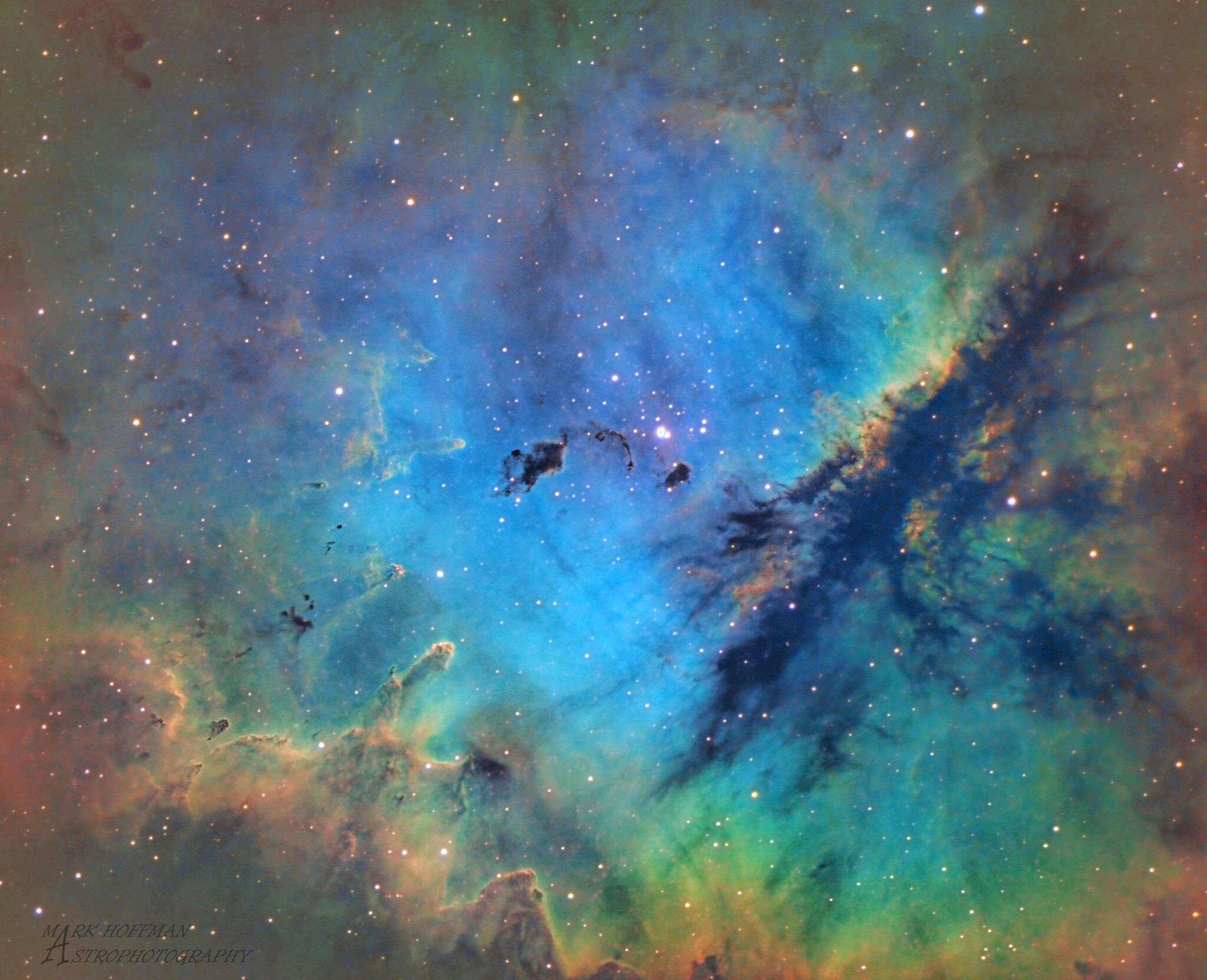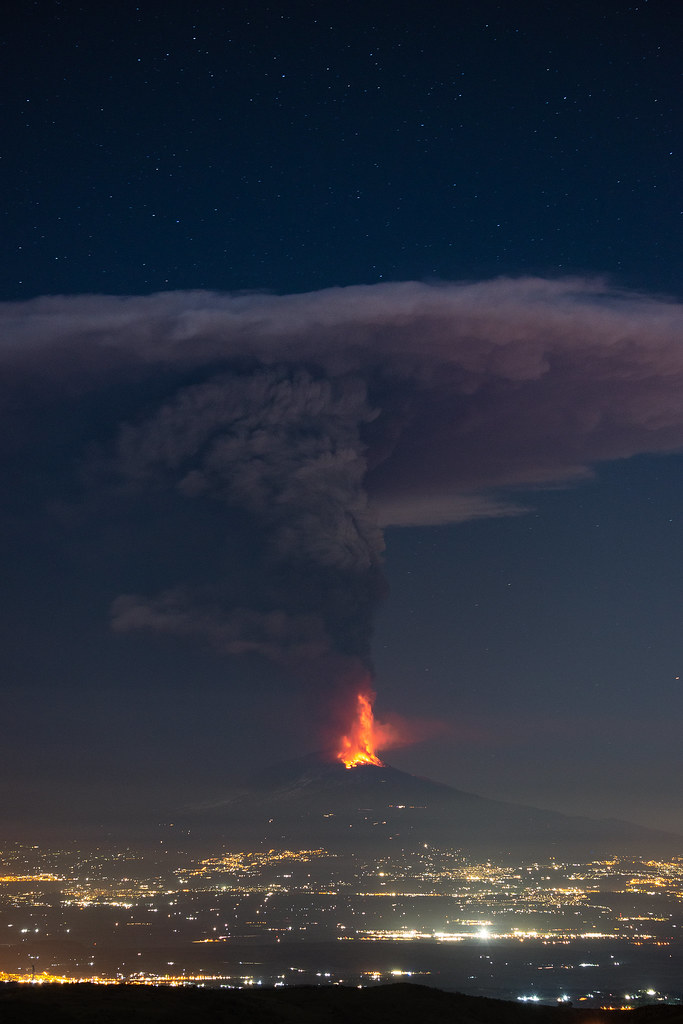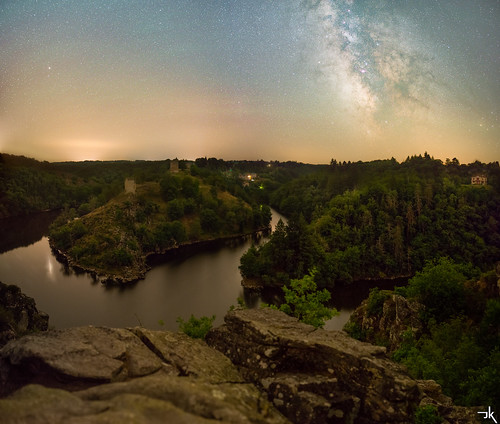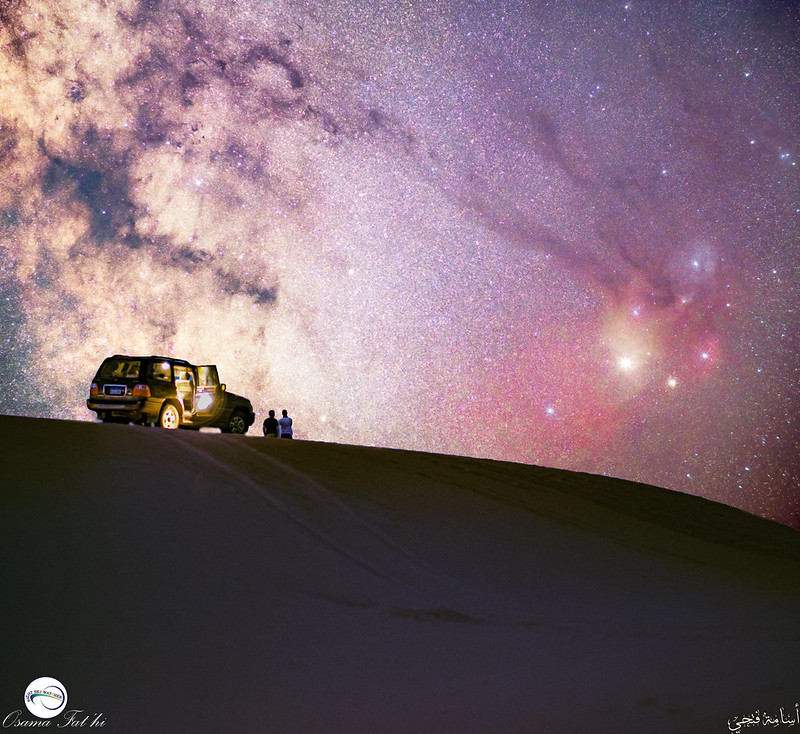
Hypersonic superheated rainbow outflows from a dying star - NGC 6302 from Hubble by William Ostling, on Flickr
Full write-up here: https://theastroenthusiast.com/hyperson ... om-hubble/
The spectacular planetary nebula NGC 6302 lies roughly 3,800 light-years away in the constellation Scorpius. More popularly known as the Bug Nebula or the Butterfly Nebula, this celestial object looks like a delicate butterfly. But what resemble dainty wings are actually roiling regions of gas heated to more than 36,000 degrees Fahrenheit. The gas is tearing across space at more than 600,000 miles an hour — fast enough to travel from Earth to the Moon in 24 minutes.
The glowing gas is the star’s outer layers, expelled over about 2,200 years. The “butterfly” stretches for more than two light-years, which is about half the distance from the Sun to the nearest star, Alpha Centauri.
A dying star that was once about five times the mass of the Sun is at the center of this fury. It has ejected its envelope of gases and is now unleashing a stream of ultraviolet radiation that is making the cast-off material glow.
The central star itself cannot be seen, because it is hidden within a doughnut-shaped ring of dust, or torus, which appears as a dark band pinching the nebula in the center. The thick dust belt constricts the star’s outflow, creating the classic “bipolar” or hourglass shape displayed by some planetary nebulae.
The star’s surface temperature is estimated to be about 400,000 degrees Fahrenheit, making it one of the hottest known stars in our galaxy. Spectroscopic observations made with ground-based telescopes show that the gas is roughly 36,000 degrees Fahrenheit, which is unusually hot compared to a typical planetary nebula.
Website: https://theastroenthusiast.com/
Instagram:https://www.instagram.com/the_astronomy_enthusiast/













